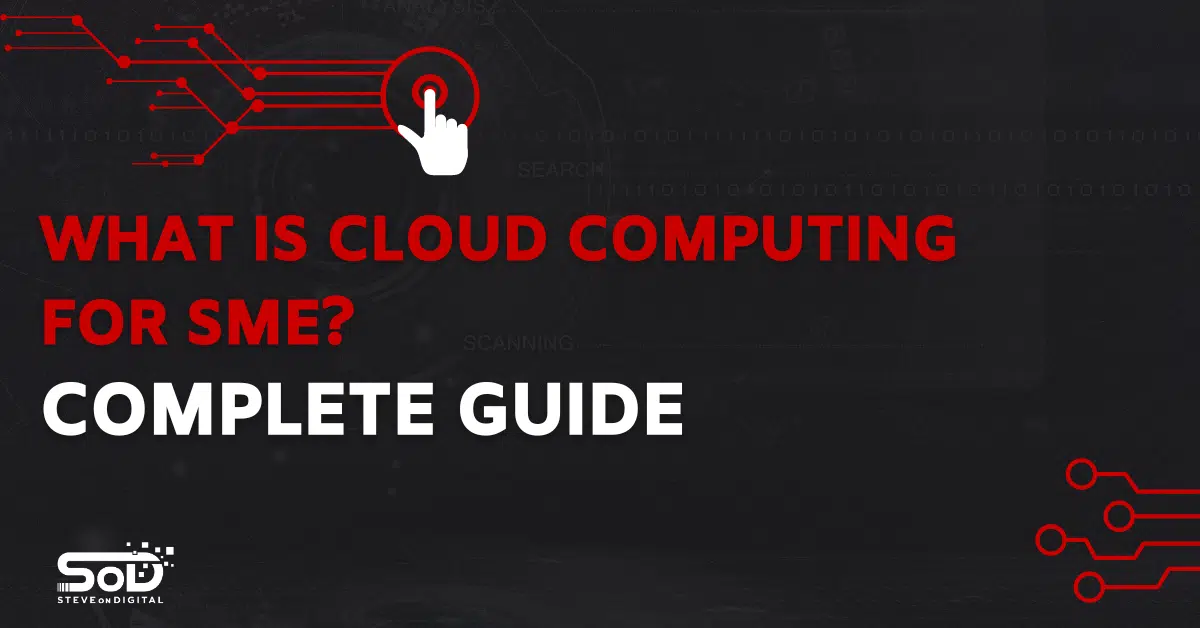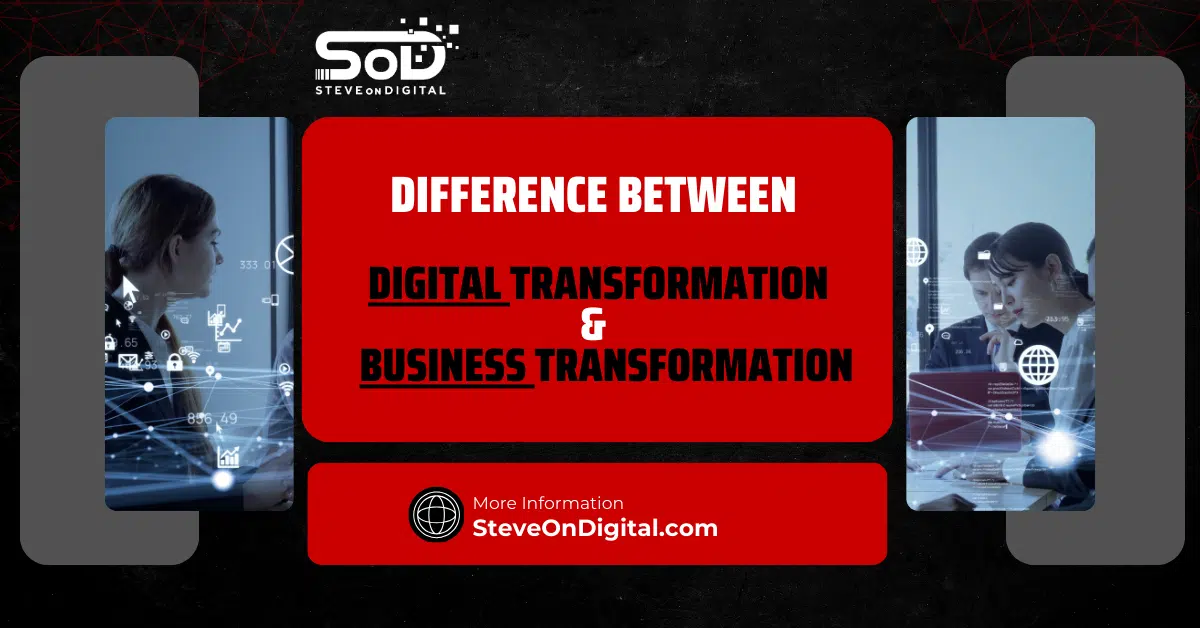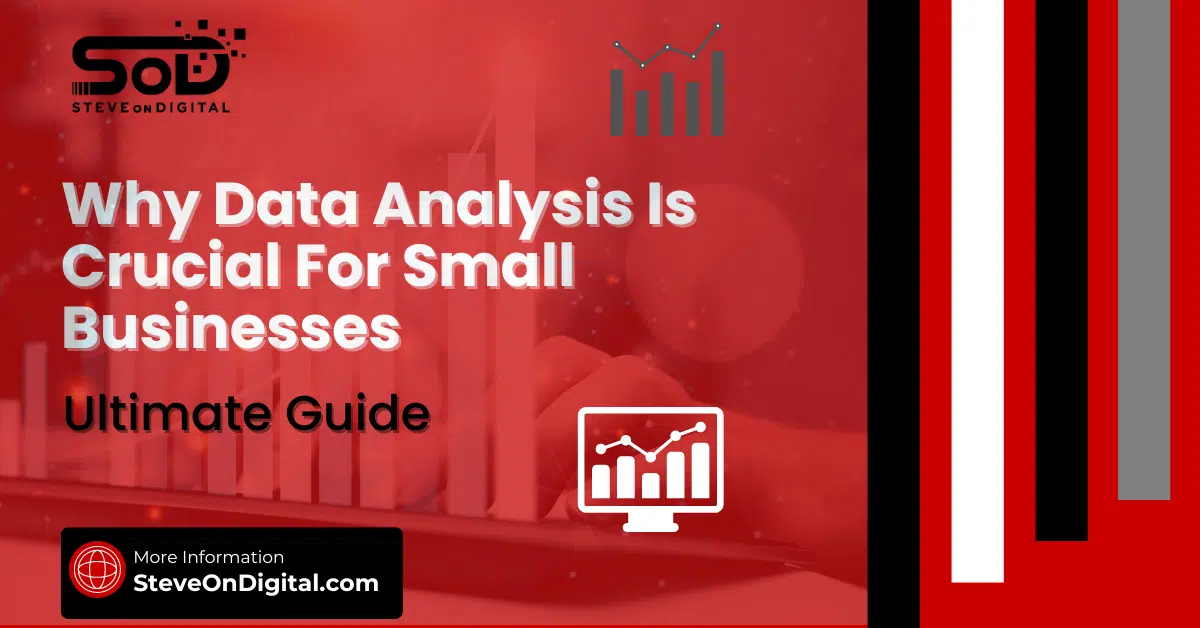Hello, fellow small business owners, I’m Steve Johnston from SteveOnDigital.
Today, I’m here to share some insights into how cloud computing is not just a buzzword but a revolutionary tool that’s reshaping how we conduct our businesses in the digital era.
With my background in electrical engineering, an MBA, and a master’s in Project Management, I’ve navigated through the tech landscape to bring you practical advice that cuts through the jargon.
The digital era brings both opportunities and challenges.
On one hand, we have access to a plethora of tools and technologies that can propel our businesses to new heights.
On the other hand, the sheer volume of options and the rapid pace of change can be overwhelming.
This is where cloud computing shines as a beacon of efficiency and scalability.
From my experience, incorporating cloud computing into your small business isn’t just about staying up-to-date with the latest tech trends; it’s about leveraging a powerful tool that can significantly streamline your business processes, enhance your data security, and offer unparalleled flexibility and scalability.
Let’s demystify cloud computing together and explore how it can be a game-changer for your business.
The Essentials Of Cloud Computing
Cloud computing is all about getting computer services like servers, storage, databases, and software over the internet, which we call “the cloud“.
It’s a way to use cool tech stuff quickly, with the flexibility to scale up or down as needed, and it can save money, too.
This means you typically pay only for the cloud services you use, helping lower your operating costs, run your infrastructure more efficiently, and scale as your business needs change.
Simple Definition And Explanation
To break it down further, cloud computing can be categorized into three main types of services:
- Infrastructure as a Service (IaaS): In the simplest form of cloud services, called IaaS or Infrastructure as a Service, you basically rent the tech stuff you need—like servers, storage, and networks—on a flexible payment plan. Think of it as hiring the heavy-duty hardware and software required for IT operations, without having to buy or maintain them yourself.
- Platform as a Service (PaaS): This category is a step above IaaS and provides additional layers like databases, web servers, and development tools that are built on the infrastructure services. PaaS is designed to support the complete web application lifecycle: building, testing, deploying, managing, and updating.
- Software as a Service (SaaS): This approach lets you use software applications via the Internet whenever you need them, often through a subscription. The cloud company takes care of all the technical stuff like hosting the application, making sure it runs smoothly on their servers, and updating it with the latest security fixes and features. It’s like streaming your favorite TV show but for software applications.
Key Components
- Cloud Services: Cloud computing providers offer a big variety of services over the internet. These services make it super simple and cost-effective to use apps and tools without having to own or manage any complicated setups or equipment. It’s like having an endless supply of digital resources available anytime you need, without needing your own gadgets or machines.
- Cloud Providers: Companies that provide cloud computing platforms, allowing users to access and store data on remote servers. These providers manage the infrastructure and platforms that run the applications.
- Cloud Technology: The underlying technology that supports cloud computing, including virtualization, which allows for creating a virtual version of something, like server space or network resources.
The Shift From Traditional IT To Cloud-Based Solutions
The transition from traditional IT to cloud-based solutions marks a significant shift in how businesses operate.
Traditional IT systems often require a significant upfront investment in physical hardware and ongoing maintenance to manage and update this hardware.
In contrast, cloud computing services eliminate the need for this, as the cloud provider manages the infrastructure.
Strategic Advantages Of Cloud Computing For SMEs
In the journey of transforming SteveOnDigital into a hub for small and medium-sized enterprises (SMEs) looking to navigate the digital landscape, I’ve seen firsthand the transformative power of cloud computing.
Let me share some strategic advantages that cloud computing brings to the table for SMEs.
Cost-Effectiveness
One of the most compelling reasons for SMEs to embrace cloud computing is its cost-effectiveness.
Traditional IT infrastructure demands a significant upfront investment in hardware and software, alongside ongoing expenses for maintenance and upgrades.
Cloud computing, however, operates on a pay-as-you-go model, significantly reducing the financial burden on small businesses.
This model allows you to only pay for the computing resources you use, which can dramatically lower operating costs.
- Hardware and Software Expenses: Traditional setups require buying physical servers and software licenses. Cloud computing eliminates these costs.
- Operational Costs: No need for onsite IT staff to manage and maintain servers, resulting in further cost reductions.
Scalability
Scalability is a critical feature for growing businesses.
Cloud computing offers the flexibility to scale your computing resources up or down based on your current needs.
This elasticity means that during peak seasons or unexpected surges in demand, you can easily increase your resources without the need for physical hardware upgrades.
- Flexible Resources: Adjust your computing power with a few clicks.
- Cost Management: Scale up or down without the need to invest in new hardware, ensuring you only pay for what you need.
Collaboration
Cloud computing has revolutionized how teams collaborate, especially in today’s remote work environment.
Cloud-based tools and platforms enable seamless communication and collaboration among team members, no matter where they are located.
Real-time data sharing and updates ensure that everyone is on the same page, enhancing team productivity and efficiency.
- Real-time Collaboration: Tools like cloud-based project management software and shared digital workspaces.
- Accessibility: Access documents and data from any device, facilitating a flexible work environment.
Security And Business Continuity
Data security and business continuity are paramount for SMEs.
Cloud companies spend a lot of money to keep your data safe.
They use strong security to protect against hackers and to prevent your information from getting lost.
Moreover, cloud computing ensures business continuity with robust backup and disaster recovery solutions, safeguarding your business against catastrophic data loss.
- Advanced Security Measures: Encryption, firewalls, and multi-factor authentication provided by cloud services.
- Disaster Recovery: Cloud backups and recovery solutions minimize downtime and data loss during unforeseen incidents.
Mobility
The mobility that cloud computing offers is unparalleled.
Whether you’re working from home, meeting clients, or on the move, cloud services ensure that you have access to your business operations anywhere there’s an internet connection.
This level of accessibility not only boosts productivity but also provides the flexibility that modern businesses need to thrive.
- Remote Access: Operate your business from anywhere in the world.
- Device Independence: Access your data and applications from any device, be it a laptop, tablet, or smartphone.
Comprehensive Cloud Solutions For Streamlining SMEs
Cloud computing isn’t a one-size-fits-all solution; it’s a vast ecosystem of services that cater to various business needs.
From customer relationship management (CRM) to accounting and project management, cloud services offer SMEs the tools they need to streamline their operations.

Let’s delve into how these solutions can transform your business.
Exploration Of Cloud Services For Critical Business Functions
- Customer Relationship Management (CRM): Cloud-based CRM systems provide a centralized platform to manage your interactions with current and potential customers, helping improve customer service and retention.
- Accounting Software: Moving your accounting to the cloud ensures that your financial data is always up-to-date and accessible. It simplifies financial management and reporting, making tax time less stressful.
- Project Management: Cloud-based project management tools offer real-time tracking of tasks, deadlines, and team collaboration, keeping projects on track and within budget.
Real-World Applications
Implementing cloud solutions leads to automation of routine tasks, freeing up valuable time for strategic planning and growth initiatives.
Collaboration tools like video conferencing and shared documents enhance teamwork, while remote work solutions ensure that your business remains resilient in the face of challenges.
- Automation: Automate invoicing, customer follow-ups, and other repetitive tasks.
- Enhanced Teamwork: Utilize shared calendars, instant messaging, and file sharing to keep everyone aligned.
Case Studies: SMEs Benefiting From Cloud Adoption
I’ve worked with numerous SMEs on their digital transformation journeys, and the success stories are truly inspiring.
For instance, a local retail store adopted cloud-based inventory management and saw a 20% reduction in stock discrepancies.
Another example is a marketing agency that switched to a cloud-based project management tool, resulting in a 30% increase in project delivery efficiency.
These are just a few examples of how cloud computing can empower your small business, making operations more efficient, enhancing security, and providing the scalability needed to grow.
As we continue to explore the vast potential of cloud computing, remember that the journey is unique for each business, and finding the right mix of cloud services is key to unlocking your business’s full potential.
Selecting And Navigating Cloud Services
As we delve deeper into the realm of cloud computing, it’s crucial to understand that selecting the right cloud services and providers is not a one-size-fits-all scenario.
Each small business has its unique needs, goals, and challenges.
As Steve Johnston, the person behind SteveOnDigital, I’ve navigated through these decisions firsthand and want to share some insights to help you make informed choices for your business.
Evaluating Business Needs Against Cloud Offerings
The first step in adopting cloud computing is to assess your business needs meticulously.
Here’s how you can start:
- Identify Key Areas: Determine which aspects of your business could benefit from cloud computing. This could range from data storage needs to customer relationship management (CRM).
- Understand Cloud Services: Get familiar with the types of cloud services available, such as cloud hosting, cloud storage, and specialized software solutions.
- Future Growth: Consider how your chosen cloud services can scale with your business. Scalability is a significant advantage of cloud computing, allowing you to adjust resources as your business grows.
Key Considerations When Choosing A CSP
| Consideration | Why It Matters | Questions to Ask |
| Security | Protecting your data is paramount. | What security measures and compliances are in place? |
| Reliability | Your operations depend on cloud uptime. | What are the service level agreements (SLAs) for uptime? |
| Support | Access to support can be critical during transitions. | What levels of customer support are provided? |
| Scalability | Your cloud services should grow with your business. | How easy is it to scale services up or down? |
Criteria For Choosing The Right Cloud Service Provider (CSP)
Choosing the right CSP is critical for the success of your cloud computing strategy.
Here are some criteria to consider:
- Reputation and Reliability: Look for providers known for their reliability and excellent service. Uptime guarantees and positive reviews from other small business owners can be good indicators.
- Security Measures: Since data security is paramount, evaluate the security protocols the provider has in place. This includes encryption, firewalls, and data backup solutions.
- Customer Support: Ensure that the provider offers robust customer support. Access to help and resources when you need them is crucial, especially during the transition period.
- Pricing Structure: Understand the pricing structure and what is included in each service tier. Opt for a provider that offers transparent pricing without hidden costs.
Transitioning To The Cloud: Data Migration, Employee Training
Moving to cloud-based services involves a well-planned transition process.
Here’s a simplified step-by-step guide:
- Preparation: Before anything else, prepare your data for migration. This might involve cleaning up existing data and deciding what data will move to the cloud.
- Choose the Right Time: Plan the migration at a time that minimizes impact on your operations, possibly during off-peak hours or a slow business period.
- Data Migration: Work with your CSP or a specialist to migrate your data securely to the cloud. This process should be closely monitored to ensure data integrity.
- Employee Training: Once the technical transition is complete, training your team on how to use the new cloud-based tools is essential. Comprehensive training ensures everyone is comfortable and efficient with the new systems.
Security And Trust In Cloud Computing
For many SMEs, transitioning to cloud computing raises valid concerns about data security.
Let’s address these concerns and outline the security measures that make cloud computing a trustworthy solution.
Addressing SMEs’ Security Concerns
The thought of storing sensitive business data on remote servers can be daunting.
However, reputable cloud providers invest heavily in securing their infrastructure and services.
The level of security offered by major CSPs often surpasses what small businesses can achieve on their own.
Importance Of Choosing Reputable CSPs
Selecting a CSP with a strong track record in security is crucial.
Look for providers that comply with international security standards and regulations.
This compliance ensures that they adhere to best practices in protecting your data.
Overview Of Cloud Security Measures
- Encryption: One of the foundational security measures in cloud computing. Encryption secures your data, both at rest and in transit, making it unreadable to unauthorized users.
- Access Controls: CSPs offer robust access control mechanisms, allowing you to specify who can access your data and what actions they can perform. This includes role-based access controls (RBAC) to ensure that employees only have access to the information necessary for their job.
- Data Backup and Disaster Recovery: Cloud services typically include backup solutions that automatically create copies of your data. In case of data loss or a cybersecurity incident, you can restore your data from these backups, ensuring business continuity.
Leading Cloud Providers For SMEs
As the digital backbone of SteveOnDigital, I’ve spent countless hours evaluating and working with various cloud service providers (CSPs) to find the best solutions for small and medium-sized enterprises (SMEs).

In this journey, three giants have consistently stood out: Google Cloud, AWS (Amazon Web Services), and Microsoft Azure.
Each of these providers offers a unique set of services tailored to meet the diverse needs of SMEs.
Comparison Of Cloud Service Providers For SMEs
| Feature | Google Cloud | AWS | Microsoft Azure |
| Specialization | AI and Analytics | Extensive Services | Integration with Microsoft Products |
| Strengths | Data analytics, Machine Learning | Scalability, Comprehensive offerings | Hybrid Cloud, Enterprise security |
| Pricing Flexibility | Pay-as-you-go | Pay-as-you-go, Reserved Instances | Pay-as-you-go, Reserved Instances |
| Ideal for | SMEs focused on data-driven decisions | SMEs requiring broad service range | SMEs utilizing Microsoft ecosystem |
Let’s take a closer look at what they bring to the table.
Google Cloud
Google Cloud is renowned for its user-friendly interface and deep integration with Google’s suite of products.
For SMEs, this means seamless integration with familiar tools like Google Workspace (formerly G Suite), which many of us already use for email, document creation, and collaboration.
Google Cloud’s strong points include:
- Big Data and Analytics: Google Cloud excels in offering solutions for analyzing big data, making it an excellent choice for businesses looking to gain insights from their data.
- Machine Learning and AI: It provides easy-to-use AI and machine learning services that can be a game-changer for businesses looking to automate processes or glean insights from customer data.
AWS
AWS is the behemoth in the cloud computing space, offering an extensive array of services that cater to nearly every computing need.
Its scalability and flexibility make it a go-to choice for startups and SMEs alike.
Key advantages include:
- Extensive Service Range: AWS offers the widest range of services among cloud providers, covering everything from web hosting to blockchain and IoT.
- Scalability: With AWS, scaling resources up or down based on demand is straightforward, ensuring that SMEs only pay for what they use.
Microsoft Azure
Microsoft Azure is the choice for businesses deeply embedded in the Microsoft ecosystem.
Its tight integration with Microsoft’s software products, like Office 365 and Windows Server, makes it a compelling option for many SMEs.
Highlights include:
- Hybrid Cloud Capabilities: Azure stands out for its hybrid cloud solutions, allowing businesses to seamlessly integrate their on-premises infrastructure with the cloud.
- Enterprise-Grade Security: Azure provides some of the most advanced security features, ensuring that business data remains secure.
Future Trends And Cloud Innovations
The cloud computing landscape is constantly evolving, with new technologies emerging that promise to redefine how SMEs operate.
As someone deeply invested in digital transformation, I’ve been closely watching two significant trends: artificial intelligence (AI) and big data.
These technologies are not just buzzwords; they are powerful tools that SMEs can leverage to gain a competitive edge.
AI And Big Data
AI and big data are transforming business operations by enabling more informed decision-making and automating routine tasks.
For SMEs, this means:
- Enhanced Customer Insights: By analyzing large datasets, businesses can uncover patterns and insights into customer behavior, allowing for more targeted marketing and improved customer service.
- Operational Efficiency: AI can automate tasks such as customer inquiries and inventory management, freeing up time for strategic planning.
Preparing For Future Developments
To stay ahead in the rapidly changing tech landscape, SMEs need to be proactive.
This involves:
- Continuous Learning: Keep abreast of the latest cloud computing trends and technologies. Online courses, webinars, and tech blogs are great resources.
- Innovation Mindset: Encourage a culture of innovation within your organization. Experiment with new cloud services and tools that could enhance your operations.
Leveraging Cloud Computing For Growth And Innovation
In the dynamic world of small and medium-sized enterprises (SMEs), leveraging technology for growth and innovation isn’t just an option; it’s a necessity.
Cloud computing, in particular, stands out as a powerful enabler that I, Steve Johnston of SteveOnDigital, have personally witnessed transforming businesses from the ground up.

Here’s how SMEs can use cloud computing to gain a competitive edge and foster innovation.
Strategies For Competitive Advantage
- Flexibility and Scalability: Cloud computing’s inherent flexibility allows SMEs to swiftly adapt to market changes and customer demands. By utilizing scalable cloud resources, businesses can manage growth without the heavy investment in physical infrastructure. This agility is crucial for staying ahead in today’s fast-paced market.
- Cost Efficiency: Moving to the cloud significantly reduces upfront hardware costs and ongoing maintenance expenses. This shift not only lowers operational costs but also allows businesses to allocate resources to areas that directly contribute to growth, such as product development and customer engagement.
- Collaboration and Productivity: Cloud-based tools enable teams to collaborate in real-time, regardless of their location. This enhanced collaboration boosts productivity by streamlining workflows and reducing time-to-market for new products or services.
- Data-Driven Decision Making: With cloud computing, SMEs gain access to advanced analytics and business intelligence tools. These tools can transform data into actionable insights, driving informed decision-making and strategic planning.
Benefits of Cloud Computing For SMEs
| Benefit | Description | Impact on SMEs |
| Scalability | Easily adjust resources to match business demand. | Flexibility to grow without hefty infrastructure investments. |
| Cost Efficiency | Reduced upfront and operational costs. | Allocate savings to growth initiatives. |
| Collaboration | Enhanced team productivity with cloud tools. | Faster project delivery, improved communication. |
| Data-Driven Decisions | Access to analytics for informed planning. | Strategic insights, better market responsiveness. |
Encouraging Innovation And Growth
The cloud provides an ideal platform for experimentation and innovation, thanks to its flexibility and the breadth of services available.
Here are a few ways SMEs can harness the cloud for innovation:
- Rapid Prototyping: Cloud environments allow businesses to quickly develop and test new ideas without significant upfront investment, reducing the risk associated with innovation.
- Access to Advanced Technologies: Cloud services give SMEs access to cutting-edge technologies like artificial intelligence (AI), machine learning, and big data analytics, which can be game-changers in developing new products or services.
- Global Reach: Cloud computing democratizes access to global markets. With cloud infrastructure, SMEs can easily deploy applications in multiple regions around the world, expanding their reach and tapping into new customer bases.
Conclusion
As we’ve explored the various facets of cloud computing for small businesses, one thing is clear: the cloud is not just a technology trend; it’s a transformative force that can propel SMEs into a future of growth, innovation, and competitive advantage.
From cost savings and operational efficiency to scalability and access to advanced technologies, the benefits of cloud computing are vast and varied.
As Steve Johnston, the mind behind SteveOnDigital, I’ve navigated the digital landscape and seen the remarkable impact cloud computing can have on small businesses.
My journey has taught me that embracing the cloud is not about keeping up with technology trends; it’s about seizing opportunities to redefine what’s possible for your business.
I encourage SMEs to explore cloud solutions and consider how they can be integrated into your business strategy.
Whether you’re looking to streamline operations, foster innovation, or expand your market reach, the cloud offers a pathway to achieving your goals.
For those ready to take the next step in their cloud computing journey, SteveOnDigital is here to guide you.
With insights drawn from real-life experiences and a deep understanding of the digital landscape, we’re committed to helping you navigate the complexities of cloud adoption and leverage the cloud for business success.
Let’s embrace the cloud together and unlock the full potential of your business.
For more guidance and insights into making the most of cloud computing for your SME, feel free to connect with me at SteveOnDigital.
Together, we can transform your business for the digital age.




